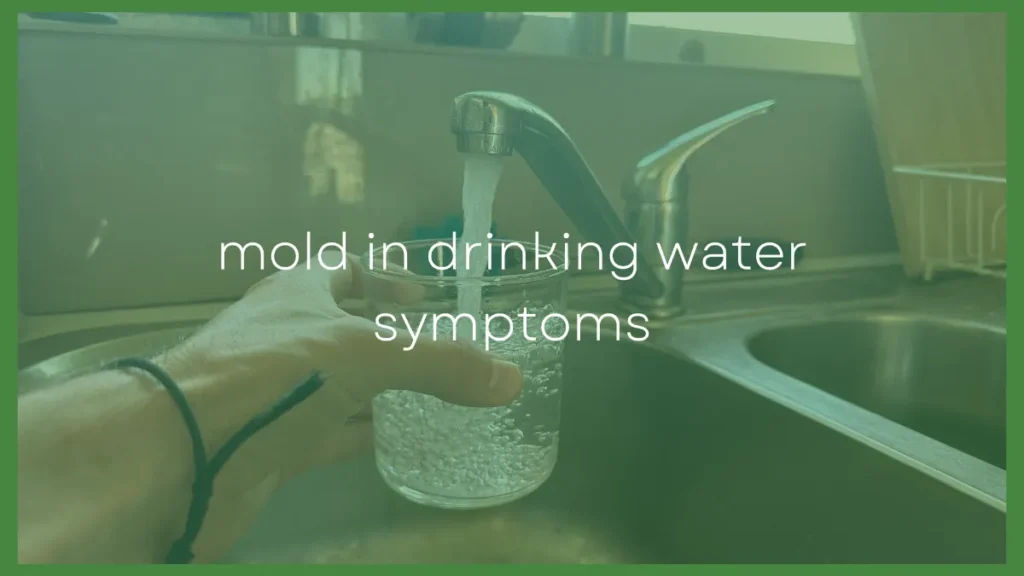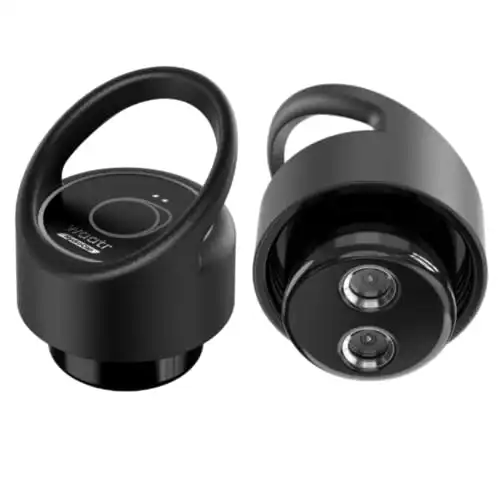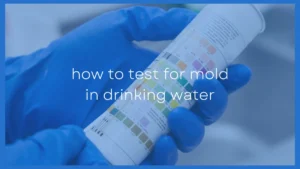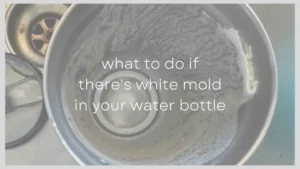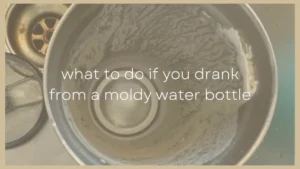If you suspect your drinking water has mold, it can be worrying because mold is caused by a fungus and can release toxic spores and can be detrimental to your health.
What are the symptoms of mold in drinking water?
Symptoms of mold in your drinking water include allergy-type or neurological symptoms, unexplained infections and digestive issues. If you already have asthma or another respiratory condition and it’s worsening, it could also indicate moldy drinking water. The elderly, pregant, very young and immuno-compromised are at greater risk of getting sick from mold in drinking water.
Last year me and my kids unfortunately had toxic mold exposure and it resulted in us having respiratory issues for months until we found this source of the mold and removed it. If you suspect that you're drinking mold make sure to test your water for mold through a registered lab or expert.
Knowing how to recognize the symptoms of mold in your drinking water is important so you can take appropriate action and safeguard your health.
Common Symptoms When There Is Mold in Your Drinking Water
Ingesting mold in drinking water only once or twice won’t likely make you feel sick. If you've found mold in your water bottle but have cleaned it out quickly then don't stress.
However, prolonged exposure can cause a wide range of symptoms, depending on the mold strain and the concentration.
There’s a good chance your drinking water has mold if your symptoms ease when you’re away from home or the office for extended periods of time and aren't drinking the contaminated water.
You can also switch to bottled or distilled water for a time and see if your symptoms ease.
Below are some of the most common symptoms people experience when they have mold in their drinking water.
1. Allergy-Type Symptoms
Toxic mold spores can attack your body’s mucous membranes and cause allergy-type symptoms such as:
- Sneezing
- Wheezing
- Coughing
- Blocked, itchy or runny nose
- Itchy skin, hives or rash
- Irritated or watery eyes
If you thought you were experiencing seasonal allergies, took an antihistamine but it isn’t working, you might be having a reaction to mold.
Some people are also allergic to certain mold strains and can have an allergic reaction when they drink mold in water.
This can cause similar symptoms to the ones above. However, in extreme cases it can anaphylactic shock.
2. Digestive Issues
Some mold strains affect the digestive tract and can irritate the lining when you ingest it. This can result in:
- Diarrhea
- Stomach cramps
- Abdominal pain
- Vomiting
- Loss of appetite
3. Worsening Asthma and Respiratory Conditions
If you already have asthma or another respiratory condition (like bronchitis, COPD or emphysema), drinking mold in water can worsen your symptoms because it can irritate your airways.
This can be dangerous and it’s wise to consult your doctor if you think this is the case.
4. Unexplained Infections
Mold is caused by a fungus which can multiply and infect your cells if you ingest it.
If you think you have an unexplained infection (especially one that feels like the stomach flu), it could be due to drinking water with mold in it.
5. Neurological Symptoms
When mold is present in drinking water it often releases mycotoxins, which can affect your nervous system. You might experience:
- Lightheadedness
- Headaches
- Dizziness
- Fatigue
The Elderly, Pregnant, Kids and Immuno-Compromised Are At Risk
When most people stop drinking moldy drinking water, any symptoms they were experiencing usually go away.
However, you should be more careful if you’re elderly, pregnant or immuno-compromised because your body will have a harder time fighting off the effects of mold.
Young children under 5 are also vulnerable because their immune systems aren’t fully developed yet. That’s why I always make sure my kids’ water bottles don’t have mold and I change my water filters regularly.
I also clean my reusable water bottles regularly to prevent mold growth and bad smells. You can also invest in a UV light water bottle lid which kills over 99.99% of bacteria, protozoa and viruses in your water before you drink it.
I personally use the HydroCap by Waatr. It's a UV lid that fits right on my Hydro Flask and I can sanitize any water before I drink it.
Designed to fit most popular brand wide-mouth bottles the dual 20 mW UV-C lights kills >99.99999% E.coli and >99.8% NTM from water in “Pro Mode” purification. Smart safety sensor prevents accidental exposure.
How To Know If You Have Mold In Your Drinking Water
The only definitive way to determine if you have mold in your drinking water is to use a home test kit or consult a mold detection specialist.
You can order home test kit's like the kit from ETR Laboratories. It isn't cheap but at just under $100 it's one of the more affordable options out there. You collect the water samples but a professional lab does the analysis and it's a great way to put your mind at rest.
If you decide to go this route, make sure the kit actually checks for mold (most of the ones from Amazon only check the water quality and bacteria content).
Calling in a mold professional will set you back anything between $250 and $600 but they can also check your home for rising damp and pinpoint the cause of the mold.
Some people place drops of drinking water in a petri dish, seal it and see if mold develops. However, this method isn’t accurate and can give a false positive.
Otherwise, checking for the following signs may indicate mold in your drinking water:
- Excess mold around faucets, water filters, reusable bottles, water softener tank and in the bathroom
- An earthy, musty or sour smell when you run the faucet
- Black grit in the toilet bowl
- Tiny dark floaters in your water
- Mold in your water pipes (you can inspect an accessible pipe)

